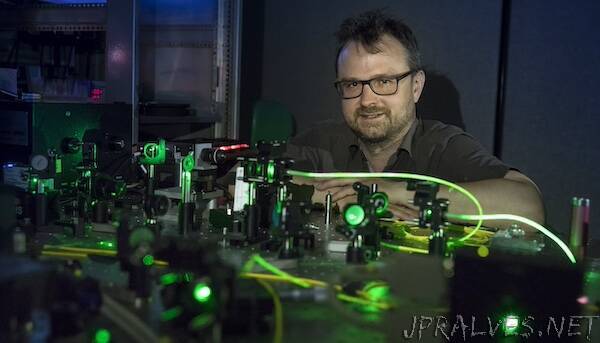
“Could future computers be powered by light particles? A new quantum optics technique developed by researchers from Macquarie University’s Faculty of Science and Engineering could make this a reality.
An international collaboration led by Macquarie University scientists has introduced a new quantum optics technique that can provide unprecedented access to the fundamental properties of light-matter interactions in semiconductors.
The research, published in the journal Nature Physics on 15 January 2024, uses a novel spectroscopic technique to explore interactions between photons and electrons at the quantum scale.
Professor Thomas Volz, co-author of the study and research group leader in the School of Mathematical and Physical Sciences, says the work has the potential to drive a breakthrough in the global quest for accessible quantum photonic technologies.
“We have developed a new technique that uses the radiative quantum cascade, where photons stored in a material journey down a ladder of energy levels generated when light and matter interact,” says Professor Volz.
“This applies even when the interactions are so weak that the resulting energy levels involved were previously too close to distinguish.”
This ability to peer closer into the quantum realm holds immense potential.
“By understanding how these minute light particles collaborate, we gain valuable insights into the quantum properties of solid materials, such as semiconductors,” Professor Volz says.
“There’s a worldwide search to find materials that allow us to control how light particles interact in these materials, so we can build optical transistors, very fast optical switches and do information processing with single particles of light rather than with electrons.”
This is the second Macquarie-led paper to be published in a Nature journal in the last week, with the University’s research into the fate of the giant ape Gigantopithecus blacki to be featured on the cover of Nature, in the prestigious journal’s 18 January issue.”
